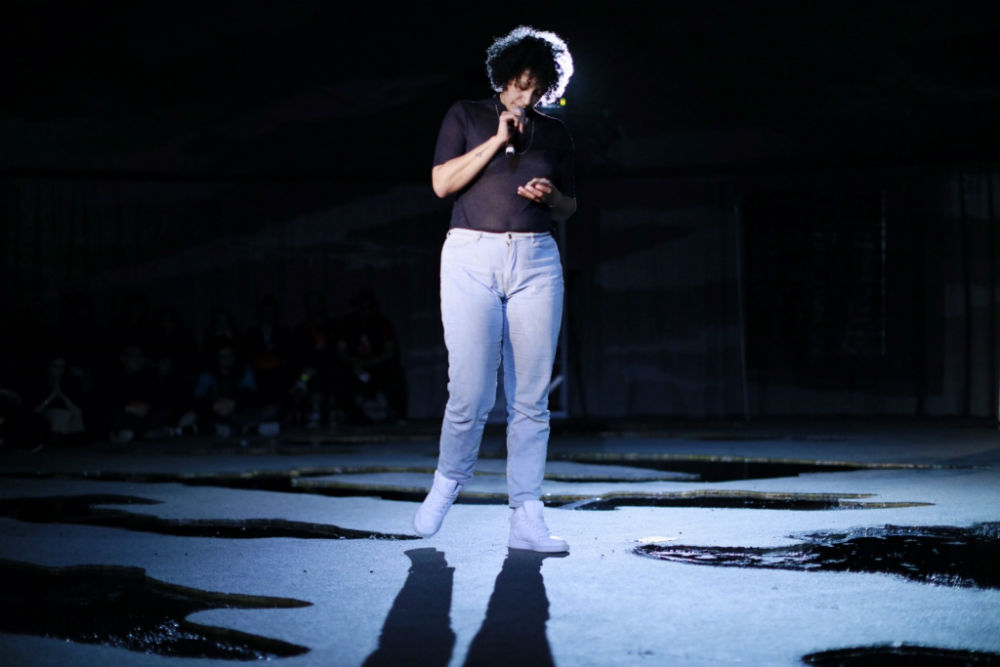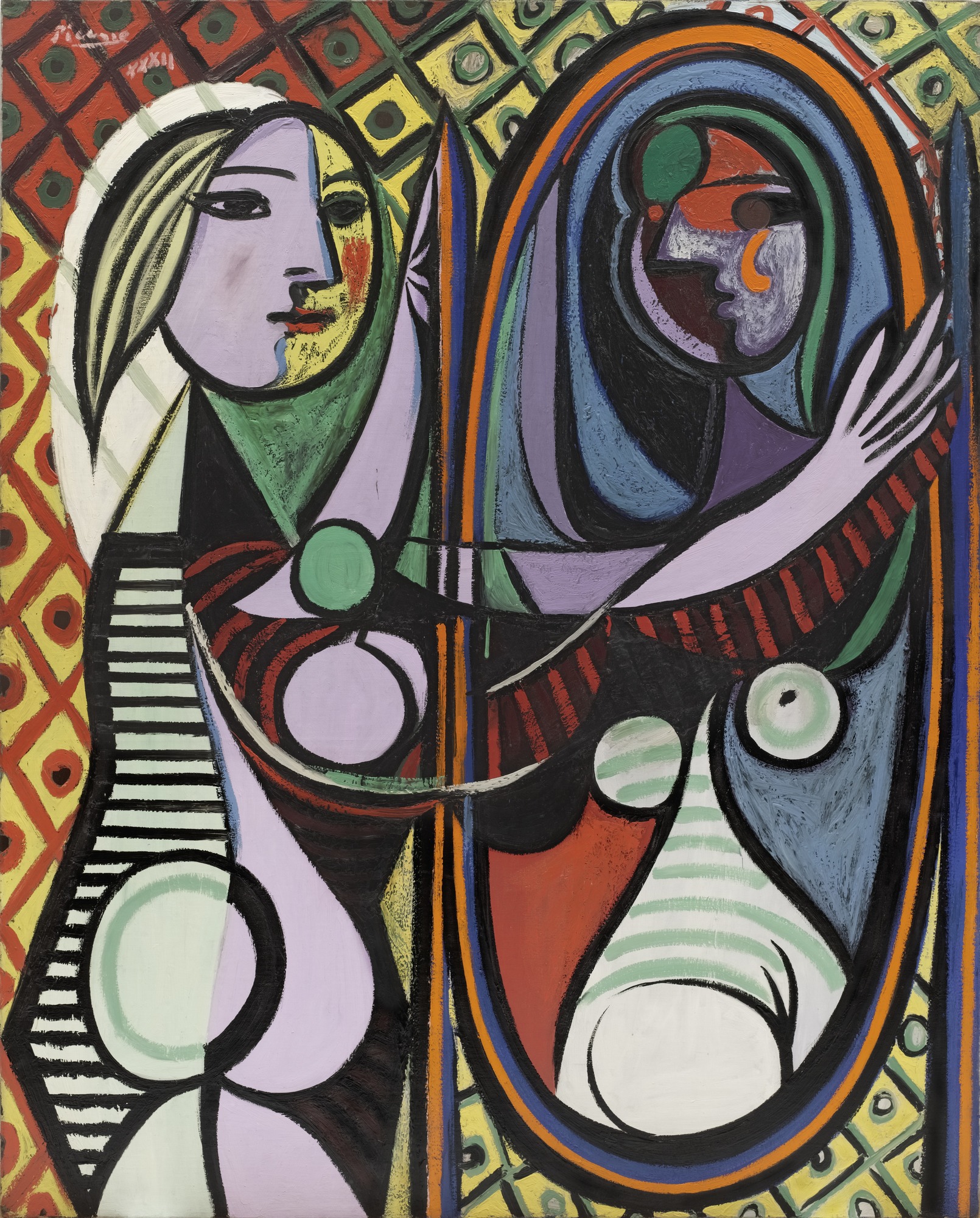Or Life Or
Our society is changing and advancing at a faster rate than ever before. One must constantly learn and adapt to new ideologies, technologies, and cultures if they don't want to be left behind and forgotten. With these constant changes, there are inevitably many individuals who will go against the grain and won't perfectly fit the molds society has fabricated for them. Hannah Black, an on-the-rise yet controversial digital artist, explores the idea of a separation between the self and our current world in her recent piece, Or Life Or, put on in the VW Dome at MoMA PS1 in New York in 2017.
The VW Dome is a flexible and transformable enclosure located just outside of the museum and creates an enclosure for large exhibitions and performances. For Black’s performance, viewers enter the dome and take their seats as they are exposed to a nearly pitch-black almost eerie stage. Black enters the set walking around in an almost restless uncomfortable manner. She is illuminated by spotlights causing her figure to pop from the dark background drawing the audience’s focus and attention strictly on her. The surface she is walking on is covered with organically shaped puddles of solidified resin reflecting the light like water. There is slightly glitched and repeated text being projected onto a screen surrounded by dark curtains. These projected words are almost unreadable as they slowly move and shift.
While experiencing this piece, viewers hear a track of ambient noise that grows more complex as electronic beats and additional tracks from popular, modern artists are added. As the audio builds in complexity and rhythm, Black takes out her smartphone and begins to speak into the mic. She has a loud and powerful, assertive voice as she reads poetic writing about body image, capitalism, politics, race, and over-all life. With quotes such as “Fuck the weaponization of solitude” and “Fuck the knowledge that lives inside me and how it’s used against me.” Black seams uneasy and almost angry about the current state of affairs, as she delivers these messages in a rhythmic, musical manner over her electronic track. This performance lasts 45 minutes and has multiple segments of dialogue and music separated by short pauses while Black looks at either her phone or the floor.
Throughout Or Life Or, viewers experience a clear expression of alienation between the performer and society, as the piece ends one is left with half-completed ideas about the current state of affairs in our modern world as well as where and how we all fit into this dynamic, complex system. As Terence Trouillot writes in his online article;
“The whole spectacle—at once stream-of-consciousness and choreographed—very successfully evoked an imagined scene of aching discord, perhaps, between the body and the self, or self and society.”
Black is constantly looking at her phone as if it’s a lifeline, an escape from the fears and anxiety of reality. She often pauses and looks at the floor or her phone, as she recuperates and recovers from her stressful exertion of energy. Her behavior and the phone itself are very symbolic of where Black, and most all of us, currently are. Our generation can be described as the most connected but also the loneliest, and Black portrays this idea as she walks around all by herself relying on her phone to convey a powerful and personal message to others. A modern individual can contact anyone one they want at almost any time but perhaps this luxury has changed the way we communicate, and interact with one another. Perhaps many of us often feel lost, alone, or trapped in our current position in time and space.
Or Life Or is one of many pieces of contemporary digital art exploring the ideas of separation of the self and society as well as an overall unrest with the status quo. Another piece of art that explores a similar concept is Pablo Picasso’s Girl Before a Mirror in which the master painted an abstract image of a woman looking at a distorted, darker image of herself in a mirror. Although mirrors technically produce an exact image of what they are facing, humans often portray themselves through their own subjective lenses. Picasso paints not only the woman how an individual would see her but also how she would see herself
Third Person by Rafael Lozano-Hemmer is also an interesting piece portraying one’s identity in the form of hundreds of written verbs. As a viewer stands before a motion tracking camera their face is projected onto a screen in front of them. But instead of seeing a clear image made up of high-resolution pixels, one’s face is reconstructed in the form of text. All of these words are individual verbs exploring the idea that our identities are nothing more than the actions we execute and the effects we have on others and our environment.
Or Life Or was on display at the MoMA PS1, NYC in April, 2017.
Links:
https://www.moma.org/calendar/events/2496#happening-occurrences
https://news.artnet.com/exhibitions/hannah-black-moma-ps1-921290









